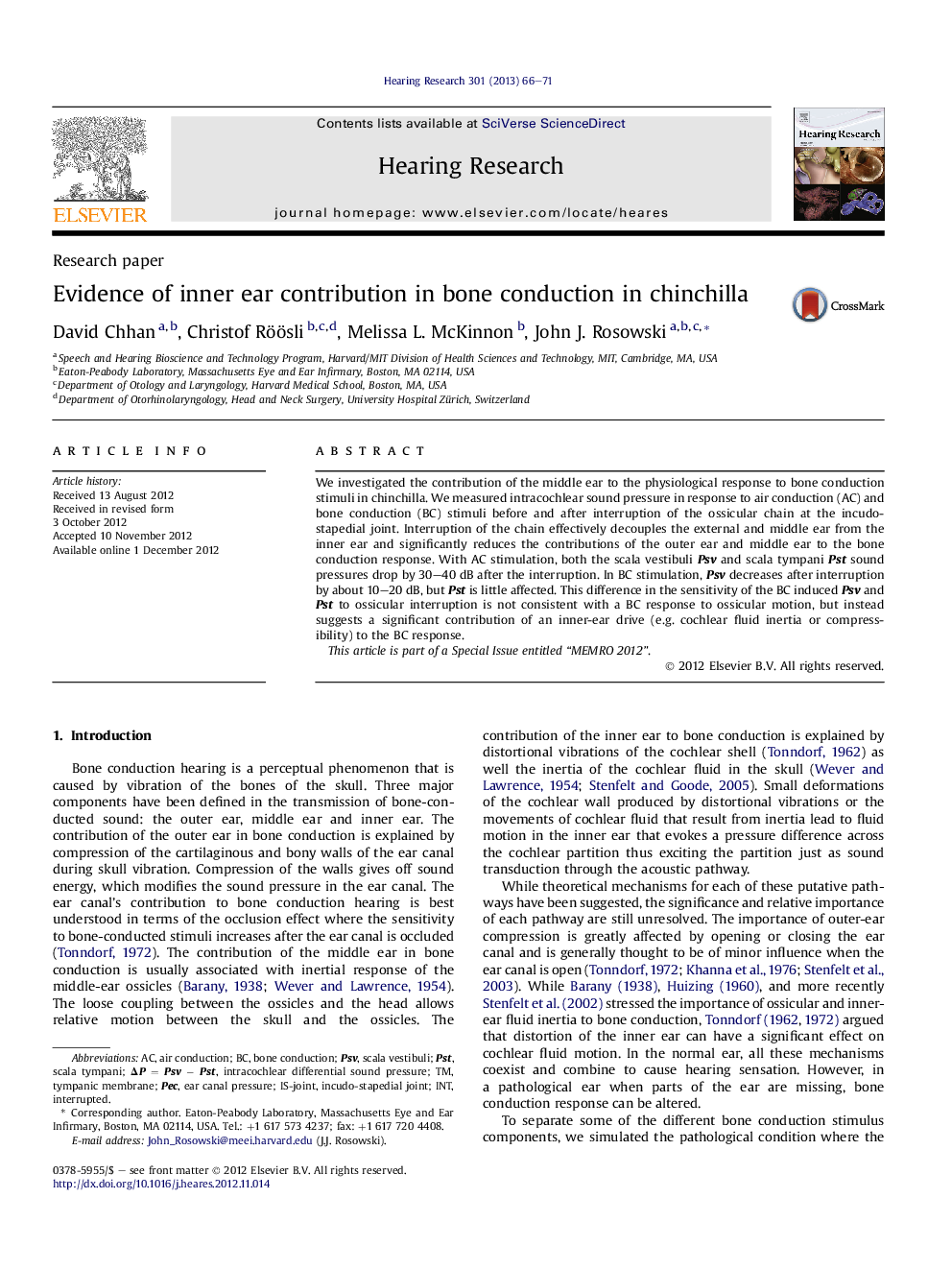| Article ID | Journal | Published Year | Pages | File Type |
|---|---|---|---|---|
| 4355206 | Hearing Research | 2013 | 6 Pages |
We investigated the contribution of the middle ear to the physiological response to bone conduction stimuli in chinchilla. We measured intracochlear sound pressure in response to air conduction (AC) and bone conduction (BC) stimuli before and after interruption of the ossicular chain at the incudo-stapedial joint. Interruption of the chain effectively decouples the external and middle ear from the inner ear and significantly reduces the contributions of the outer ear and middle ear to the bone conduction response. With AC stimulation, both the scala vestibuli Psv and scala tympani Pst sound pressures drop by 30–40 dB after the interruption. In BC stimulation, Psv decreases after interruption by about 10–20 dB, but Pst is little affected. This difference in the sensitivity of the BC induced Psv and Pst to ossicular interruption is not consistent with a BC response to ossicular motion, but instead suggests a significant contribution of an inner-ear drive (e.g. cochlear fluid inertia or compressibility) to the BC response.This article is part of a Special Issue entitled “MEMRO 2012”.
► Intracochlear sound pressures were measured in chinchillas in response to bone-conducted sound. ► The sound pressures in the vestibule and scala tympani differ in magnitude. ► Ossicular interruption reduces the bone-conducted sound pressure in the vestibule. ► Ossicular interruption has small effects on the sound pressure in scala tympani. ► Intracochlear sound pressure measurements suggest inner-ear sources dominate the bone conduction response in chinchillas.
